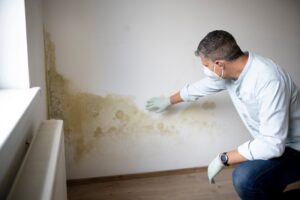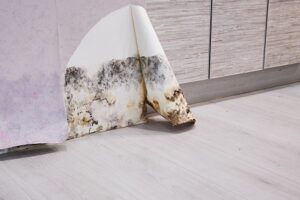
In a healthcare setting, the importance of preventing the growth and proliferation of mould takes on new dimensions.
“The moment you see mould in a hospital or healthcare facility is the second you want to do something about it,” says Brendan Murphy with First Onsite Property Restoration. “Mould can cause a wide range of health issues, which can pose severe risks to patients already dealing with immune deficiencies or respiratory issues.”
 For some patients, exposure to mould spores can result in coughing, congestion, fevers, or headaches. For others, it can lead to severe respiratory conditions that can be fatal if left unaddressed, particularly in older or more vulnerable demographics. The challenge in preventing these risks within healthcare settings, however, is that mould can enter a hospital or medical facility through a number of means and remain undetected for long periods.
For some patients, exposure to mould spores can result in coughing, congestion, fevers, or headaches. For others, it can lead to severe respiratory conditions that can be fatal if left unaddressed, particularly in older or more vulnerable demographics. The challenge in preventing these risks within healthcare settings, however, is that mould can enter a hospital or medical facility through a number of means and remain undetected for long periods.
“There are plenty of ways mould starts growing within a hospital, and after it takes root, mould only needs 24 to 48 hours to grow and 1 to 12 days to start colonizing,” Murphy adds.
A resilient risk
Healthcare environments can be an ideal home for mould. Consider that mould feeds on wet cellulose materials and thrives in humid environments. This can include hospital laundry rooms, kitchens, patient showers, bathrooms, and areas where water has been left to collect, such as behind walls, under flooring, or within the ductwork. Even something as simple as a patient forgetting to turn off a tap in their room or water being pushed into walls and beneath flooring during routine cleaning is all it takes to establish the conditions in which mould begins to form.
 Mould is also a common concern after an emergency (e.g., leak, flood, extreme storm) or construction project (e.g., renovation, expansion, etc.) where water can slip through deficiencies in the building envelope and/or ventilation systems fail.
Mould is also a common concern after an emergency (e.g., leak, flood, extreme storm) or construction project (e.g., renovation, expansion, etc.) where water can slip through deficiencies in the building envelope and/or ventilation systems fail.
Certainly, even the best HVAC equipment and hospital facility designs can fail to keep mould from forming. The sooner these issues are spotted, the better, which is why all healthcare facility stakeholders are encouraged to keep an eye out for “tell-tale” signs of mould, which include (but are not limited to) black spots or other forms of mildew on walls, swollen floorboards/walls, musty smells, water stains, and persistent health impacts (e.g., coughing, fever, etc.).
Raising the defences
There are solutions to help prevent mould in a healthcare environment. Beyond addressing areas with high humidity and poor ventilation, other proactive measures can be taken. Mould identification and remediation plans should kick in once a leak or water-related incident is discovered. Using leak detection technology to get immediate alerts can ensure proper safeguards are in place to manage the risks.
Removing mould is more complex than simply wiping it from view. There are specific guidelines for mould removal in a healthcare environment pertaining to how the potential health risks are evaluated, where patients should be moved, and what constitutes successful remediation. For example, air quality testing must occur before, during, and after removal to verify the problem has been properly remediated.
“With mould issues, the facility can choose to handle the issue internally, but it is best to seek out a restoration partner like ourselves who can tackle the problem using everything in our toolkit,” says Murphy. “Either way, it’s important to have an emergency response plan that you can follow to remove that risk for hospital staff, patients, and guests.”
Mould is a priority risk in healthcare environments. With diligence, planning, and the right partners, it can be kept at bay.

Brendan Murphy is Vice President, National Accounts at First Onsite Property Restoration.
The post Mould is a priority in healthcare appeared first on REMINET.






0 Comments